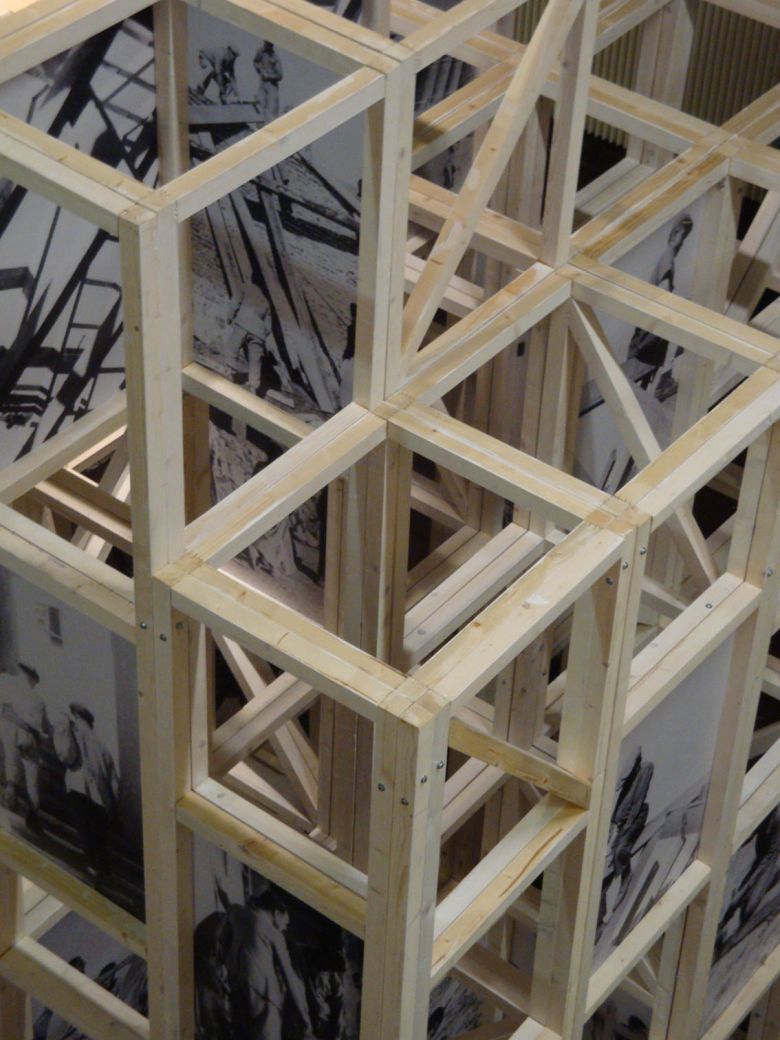Modern Essays 3
Modernity Unveiled /
Interweaving Histories
Gülsün Karamustafa
Salt Galata
November 22, 2011 – January 22, 2012

Modernity Unveiled / Interweaving Histories, 2010
Installation view at Tanzimat, Augarten Contemporary, Wien
Installation view at Tanzimat, Augarten Contemporary, Wien
The darkest period in the history of Europe had peculiar consequences on the formation of the institutions of the young Republic of Turkey. When the specter of fascism made it impossible for Jews and socialists to remain in Middle Europe, many architects, urbanists, teachers, musicians, doctors and artists sought refuge in Turkey. This group helped shape the transformative institutions of the country at a time when local professional knowledge was limited. One of these people was Austria’s first woman architect, Margarete Schütte-Lihotzky. Gülsün Karamustafa’s Modernity Unveiled / Interweaving Histories, first exhibited in Vienna in 2010, reflects upon a lesser known facet of the remarkable story of Schütte-Lihotzky. Working together with mentor Adolf Loos, and later, at the City Council of Frankfurt, with legendary architect and city planner Ernst May, Schütte-Lihotzky designed public housing, educational facilities and community structures. When the political situation in the Weimar Republic began to deteriorate, Schütte-Lihotzky joined a team of seventeen architects - the “May Brigade” - and moved to the USSR to work on public buildings. In 1938, as Stalinism became a real threat, she moved with her husband to İstanbul at the invitation of Bruno Taut.
Karamustafa’s installation pivots upon the grade school designs of Schütte-Lihotzky for the Village Institutes in Anatolia. The Village Institutes were part of governmental programs recognizing that economic and social progress started in rural areas. These programs were also a means of responding to the consequences of the Great Depression. The installation utilizes the scale of the original architectural plans and employs a detachable wooden structure to summon notions of construction and utilitarian modernism. Photographs underscoring the collective mobilization in Turkey during this period are arranged into the structure like building units.
Modernity Unveiled / Interweaving Histories is the third project in the Modern Essays series, and is accompanied by a publication put together by the artist.
Karamustafa’s installation pivots upon the grade school designs of Schütte-Lihotzky for the Village Institutes in Anatolia. The Village Institutes were part of governmental programs recognizing that economic and social progress started in rural areas. These programs were also a means of responding to the consequences of the Great Depression. The installation utilizes the scale of the original architectural plans and employs a detachable wooden structure to summon notions of construction and utilitarian modernism. Photographs underscoring the collective mobilization in Turkey during this period are arranged into the structure like building units.
Modernity Unveiled / Interweaving Histories is the third project in the Modern Essays series, and is accompanied by a publication put together by the artist.
Interview with Gülsün Karamustafa at Augarten Contemporary (Tanzimat, January 21 - May 16, 2010)

